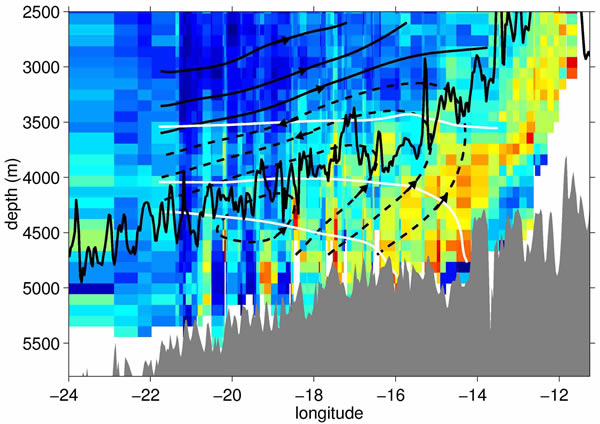The densest waters found in the ocean interior are formed at several high-latitude sites where atmospheric forcing causes surface water temperature and salinity conditions to match those of the deepest waters. These waters spill into the abyss and are carried equatorward by a system of deep boundary currents. Being far removed from the wind driven Ekman layer, processes such as tides and buoyancy forcing by turbulent mixing often contribute significantly to the flow dynamics. Flow interaction with topography, such as ridges and seamounts, is also an important factor in abyssal circulation physics.